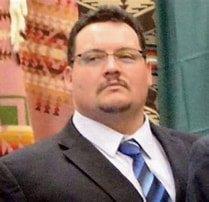Preserving tribal languages in Montana
Preserving tribal languages in Montana
By Clara Caufield,
NSNT Correspondent
Ed Small( courtesy photo)
There are seven Indian reservations in Montana, home to eleven tribal languages. All of these are still spoken daily, but rapidly losing many fluent day-to-day speakers who are primarily elders, especially as a result of the COVID pandemic which has fallen hardest upon those of the tribal nations.
These tribal tongues include: Dakota/Nakota (Fort Peck); Ojibway/Neyio (Rocky Boy); Absolegaa (Crow); Ttsistsas/Suhtaio (Northern Cheyenne); Southern Piegan (Blackfeet); Salish, Kootenai and Pond O’reille (Flathead); Aiineeh/Nakota (Fort Belknap) and Little Shell, Ojbeway, all alive but rapidly losing speakers.
The jeopardy of this situation was marked in 2015 illustrated by the Fort Belknap Tribe, where there were only 5 living fluent Ainee speakers left. “That is so profound and tragic. When they pass on, that language could be lost” Windy Boy said, tears in his voice.
And there is also “sign” language, a common means of communication between Tribal people who spoke different tongues, but talked to one another through hand and body language.
Many of these tribal languages have been written down by linguists in dictionaries for Tribes, including video and other forms. Yet, in order to “live” a language must be spoken and used.
Sadly, now English is now the common currency of communication among the younger members of tribal peoples in Montana, estimated at 87,000 in the 2010 census.
Some language experts predict that many of those beautiful forms of speech could be lost within a short time, unless successful measures are taken to systematically help the young learn to speak.
A look back into history reminds it is almost a miracle that these tongues still survive.
When Tribes of the great northern plains were subdued in the late 1800’s, overwhelmed by more numerous forces and arms, they were forced onto reservations. It was then the goal of the U.S. government to assimilate them that is: “Christianize, civilize and de-Indianize.”
Thus, under government policy and with the assistance of boarding schools and churches, it became illegal to speak tribal languages and practice ceremony. Many children at boarding schools were severely punished when caught speaking “Indun,” the nuns packing rulers with sharp steel sides, whacking hands, pulling ears and hair, dragging out the “paddle” and inflicting other punishment for such offense.
Ed Small, a mixed blood Northern Cheyenne who spoke both English and Northern Cheyenne recalled feeling so sorry for his school mates at boarding school. “Many of them didn’t understand what was going on,” he commented. “At night in the dorms they would whisper to one another in their language and cry.”
Jonathon Windy Boy, Assinboine/Cree remarked, “He spoke of the similarity that happened to so many of our relatives.”
Thus, the tribal languages and ceremonies went “underground”, miraculously surviving, but the number of fluent speakers is seriously thinning out. And many elders, not wanting their children to suffer as they did, encouraged them to speak English. “It will be easier for you,” many of them, such as my own grandmother advised.
In 2013, then State Senator, Jonathon Windy Boy D-MT Rocky Boy reservation turned his attention to this problem, keenly aware that language, dance and ceremony are at the heart of being an “Indun”.
He introduced and led the effort to gain passage of The Montana Tribal Language Preservation Pilot Program. That law is based upon some important assumptions:
Montana is committed in its’ educational goals to the preservation of American Indian integrity;
Language in the form of written, spoken or sign language is fundamental to cultural integrity;
Montana tribal languages are in a time of crises through the loss of native speakers, writers and signers;
The tribes and state have resources such as tribal colleges, councils, and historic preservation offices and state universities, historical society and library to preserve and protect Montana tribal languages for this and future generations.
That initial law was funded by two million from the general fund in State appropriation to begin some pilot or ‘test’ projects, developed by the Tribes, largely through the Tribal colleges to develop language teaching models and protocols. Those initial projects proved so promising that the law has now become permanent, though subject to bi-annual appropriations approved by the State Legislature. Since, 2013, Windy Boy reports that the State of Montana has invested over eight million in this effort.
This effort was strongly supported by the Indian Caucus in the Montana Legislature, especially Jason Small, Northern Cheyenne who sat ‘on the Republican side of the aisle’, Windy Boy acknowledged.
During that effort, many tribal leaders came to the Legislature in support, such as Dr. Richard Little Bear, Northern Cheyenne, a fluent speaker of many languages, including his own, who has dedicated much of his career to saving the Tstitstas/Suhtai form of speech and communication. “He is the ONE who helps his people and all of us in this effort,” Dancing Child said.
The Montana Tribal Language project has resulted in several innovative teaching models and protocols, some replicated across the nation as Tribes everywhere struggle with the problem of language preservation.
In future installments, look for stories about what tribal people who are on the ground, in the schools and working with young ones are doing daily to help save tribal languages which are struggling to survive.
(Clara Caufield can be reached at acheyennevoice@gmail.com)
The post Preserving tribal languages in Montana first appeared on Native Sun News Today.

